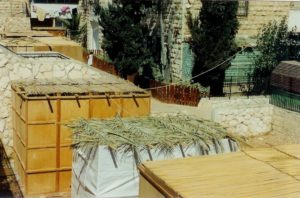SUKKOT or the Feast of Tabernacles is the third and last of the three pilgrimage festivals.
Whereas the Feast of Unleavened Bread is held in the Spring and the Feast of Shavuot is held in the summer, SUKKOT is held in the fall.
And again, since this is a pilgrimage festival, all Hebrew males are required to journey to the central sanctuary to give praise and sacrifice to the Lord.
There are actually a couple of interesting similarities between the Feast of MATZA and the Feast of SHAVUOT.
MATZA begins on a fixed calendar date.
So does SUKKOT.
MATZA is a 7-day feast.
So is SUKKOT.
The 1st and last days of MATZA are special festival sabbath days.
The same goes for SUKKOT.
So when does SUKKOT kick off?
It kicks off every year from TISHRI 15.
TISHRI is the 7th month of the Hebrew religious calendar.
Given that the number 7 is considered to be the number of completion, I find it interesting that the final festival is the 7th Biblical festival and also just happens to fall on the 7th month of the religious calendar.
God’s fingerprints are all over this Torah.
Now I concluded my last post by saying that the theme of SUKKOT is one of boundless joy.
Why is that?
It is because this agricultural based holy day marks the conclusion of the threshing of the grains.
The separation of the wheat from the chaff comes to a final close during this feast!
It also signifies the end of the vineyard harvest.
In other words, winemaking also comes to an end…
…in order to prepare for new wine!
And just like Shavuot…
…this feast is HIGHLY INCLUSIVE.
For all those who are invited and keep in mind NOT EVERYONE WILL BE INVITED (I’m assuming the lawbreakers won’t be there), there will be a combination of Hebrews and non-Hebrews.
A mixed multitude of all those who have been properly grafted into Israel shall be there.
Just like it was at Mount Sinai when the mixed multitude received the Torah.
If this isn’t a cause for joyous celebration, I don’t know what is.
The next time we meet, I’m going to show you how Messiah’s ministry fulfilled the true intent behind these festivals.




Leave a Reply